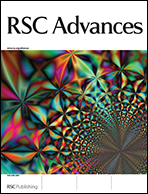A new sustainable approach for the synthesis of highly porous carbon cryogels and aerogels is presented. Such monolithic carbogels have been obtained via the hydrothermal gelation of a phenolic compound, i.e. phloroglucinol, with monosaccharides, i.e. glucose, fructose or xylose. While the carbon precursors used herein can be isolated from lignocellulosic biomass, the hydrothermal carbonization process does not involve any catalyst, making our current approach meet green chemistry principles. Beyond an understanding of the gelation process, the influence of the drying method and synthetic pathways on the final textural properties has been underlined. Because of surprisingly high micro-mesopore surface areas and volumes, up to 1159 m2 g−1 and 1.5 cm3 g−1 respectively, together with airy interlinked macromorphologies, these sugar-derived dried-gels appear as really promising candidates for separation and heterogeneous catalysis. Furthermore, after further thermal treatment under inert atmosphere, conductive carbogels depicting significant specific surface areas and volumes, up to 700 m2 g−1 and 0.9 cm3 g−1, together with a preserved monolithic morphology can be obtained. Thus, these new biomass-derived carbogels are expected to offer a broad range of potential applications, such as electrodes for batteries and fuel cells, or scaffolds for hydrogen and carbon dioxide storage.


 Please wait while we load your content...
Please wait while we load your content...